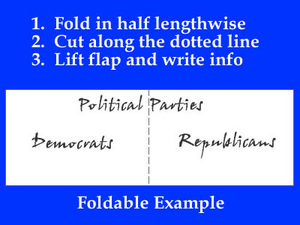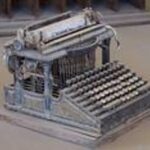Many students thrive on visual aids. Graphic organizers are one way to help students visualize information and organize it into meaningful categories.
Sometimes this can mean a simple chart with boxes and circles to fill in. Other times, you’ll want to use more meaningful and deliberate graphic organizers. This article will introduce you to three specific types of organizers and provide you with some references to find more information on this and other educational topics.
Foldables
One great type of graphic organizer is the foldable.
With this type of organizer, your students fold a piece of paper into a specific shape to turn the paper into a 3-dimensional graphic organizer. For example, you could fold the piece of paper in half lengthwise. Then, you could divide the front flap into four sections. Underneath each section, you could place information about a single topic.
Now, the student can simply flip up the flap to see what he or she wrote about a specific topic.
These are great for building timelines, comparing and contrasting, and organizing bits of knowledge into categories. Check out the link above for some example uses and layouts.
Historical Heads
Another fun graphic organizer is the historical head.
With this method, your students start with a silhouette of a head and fill it in with information about a person or character. For example, a Social Studies student might use this to organize information about a famous person in history after doing some independent research.
The idea is to think about ideas, events, or things that would be associated with that person – i.e. what is going on in his or her head. This can be used for a general group of people – for instance a social class – or for a specific person – like a historical personality or a fictional character. That makes this a perfect organizer to use in Social Studies and Language Arts classes.
Check out the link above for a sample worksheet and some more suggestions.
Venn Diagrams
Lastly, there’s the traditional venn diagram. They are tried and true, and very useful for comparing and contrasting two subjects.
Hopefully, you know how this works. You create two circles that overlap. In the outside sections, you write down things that are unique to each subject. In the overlapping middle section you write down similarities.
These diagrams are great for comparing characters or subjects. You could also use them in a Math class to visualize the concept of sets for algebra and statistics. Venn diagrams are very versatile.
Check out the link above for a sample diagram.
Remember – you’re students need help organizing and thinking about the information that they learn. Visual organizers and diagrams are perfect for this. With a little creativity, you can find or create the perfect organizer for any task.




